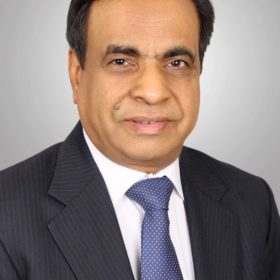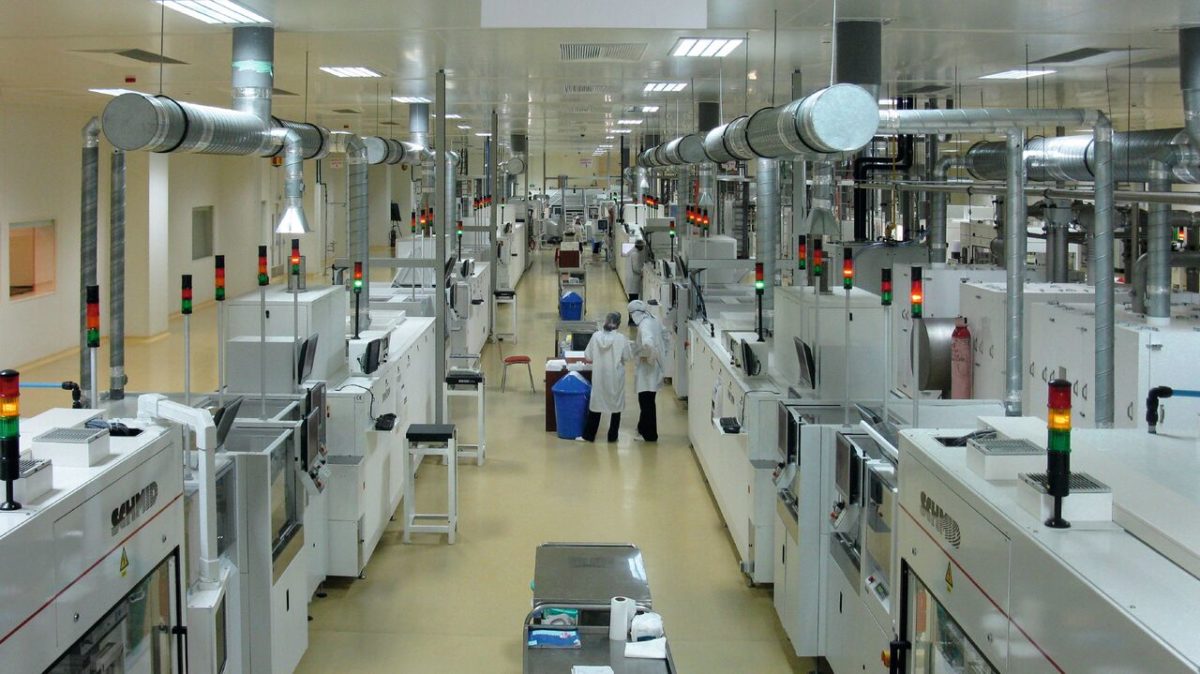Question 1: How can India better support rooftop solar growth?
 Answered by Rajneesh Khattar, Group Director, UBM India
Answered by Rajneesh Khattar, Group Director, UBM India
The total installed capacity of rooftop solar in India stood at a cumulative total of just 1.3 GW at the end of financial year (FY) 2017. To put that into context, the government’s current target is for rooftop PV capacity to reach 40 GW by March 2022 – four years from now. However, the rooftop solar segment is certainly set to grow very rapidly in India because he key drivers for growth are well identified, leading to the carving out of clear strategies by a number of engaged private players.
These key drivers include: Increasing consumer awareness and acceptance of rooftop solar; delivering much-appreciated savings in electricity bills; and fierce competition among the 5,000 + solar players operating in the main growth markets of commercial and industrial (C&I), government institutions, and residential households.
While the bulk of rooftop solar capacity is currently installed in the C&I space and atop government Institutions, it is primarily the lack of viable financing options that is limiting growth in the residential sector – a sector, don’t forget, that boasts millions of square meters of optimum rooftop space across this vast and heavily populated nation. To make matters worse, some states have capped the net metering policy limit to 1 MW only, which is not so favorable. Certain government bodies therefore need to strip away such caps, particularly while the rooftop sector remains in the nascent stages of growth.
Furthermore, too many players (in excess of that 5,000 figure I stated above) have entered the fray in recent years, and many of them offer risky contracts with unreliable terms. Combine this with an ongoing price way where cheaper is seen as better, and the sector could potentially be storing up a dangerous proposition for itself, setting bad precedent after bad precedent. This could have a negative impact in the long term.
An additional challenge includes identifying not just available roof space, but suitable roof space. Many residential buildings in India are traditionally not designed in a way that is conducive to hosting a PV array (flat roofs, huddled close together so often shaded) and so moving forward, such considerations need to be taken into account by designers and architects.
On top of this, the sector also needs to tackle high capex, a lack of financial or even environmental incentives, and a lack of funding solutions outside of the off-grid space. These are the area in which the government should focus if it wishes to tap into the immense potential of India’s rooftop solar sector.
Question 2: Is there much hope that India’s domestic manufacturing sector can begin to meet demand soon?
 Answered by K N Subramaniam, Member of General Council, Indian Solar Manufacturers’ Association (ISMA)
Answered by K N Subramaniam, Member of General Council, Indian Solar Manufacturers’ Association (ISMA)
At the outset, I’d just like to state that solar is here to stay and will become an important source of energy in the power mix of every nation. A thorny question facing India, of course, is how to manage demand for solar panels and other components that are critical to the implementation of projects and growth of the sector.
The country is faced with two options: import the panels, or make them domestically. While import seems like the easy solution, the real long-term option is for India to develop a strong indigenous manufacturing base.
India has more than 3.5 GW of solar cell production and in excess of 10 GW of solar module production capacity. However, most of this represents idle plants, and the dire situation was exacerbated last year when there was confusion over domestic manufacturing due to World Trade Organization (WTO) restrictions, a lack of tenders, and the impact of additional tariffs – particular with regards to whether they would be passed on to the consumer or absorbed by developers or manufacturers.
With better clarity from the Ministry of New and Renewable Energy (MNRE), we are all set to go to achieve the bold targets laid out under the National Solar Mission (NSM).
We need an annual run rate of 15-20 GW in solar installations to hit that goal of 100 GW by 2022, and based on current installed capacity there is 80 GW to go.
Enablers for rapid deployment of a strong domestic manufacturing base include this continuity of demand – this will give investors confidence to back domestic manufacturing. Existing units that have suffered but are now raring to go with new capacities include Tata Power Solar, Adani, Jupiter and Indo Solar, to name just a few.
New Investors that have committed large scale financing, such as SoftBank and GCL, are looking for policy clarity and risk mitigation through better demand calibration. Such weighty backers are likely to head to India with large-scale investments covering the entire value chain from Ingots and wafers to cells and modules, but they badly needed private capital to flow and for banks to show their eagerness to support.
The timelines for the implementation of manufacturing projects have compressed dramatically, too. We see that Vietnam has installed more than 8 GW of manufacturing capacity in just three years, and the U.S. with its recent duty imposition on China is already a favored destination, with more capacity additions to follow. Even Indian capacities have gone up rapidly. Adani implemented more than 1,200 MW capacity in just 24 months, for example.
India also has a reservoir of talent, freshly trained and eager having attended our excellent polytechnics and engineering colleges, and so there is scope to provide a large base of educated manpower for the industry. It certainly is the vision of Prime Minister Modi to ‘Make in India’, and to provide employment opportunities to educated youth, lead the International Solar Alliance (ISA) and play a pivotal role in steering the world towards a cleaner future. For us all to succeed, the foundations of solar’s growth need to be built in India.
Question 3: What opportunities exist for solar+storage in India?
 Answered by Rahul Walawalkar, Executive Director, India Energy Storage Alliance (IESA)
Answered by Rahul Walawalkar, Executive Director, India Energy Storage Alliance (IESA)
The key challenge facing India in reaching its bold renewables targets lies in the ability of the grid to integrate variability associated with solar and wind, as well as the huge investment required for upgrading the transmission and distribution (T&D) infrastructure. Energy storage can aid the better integration of these renewables by providing multiple values to the system, such as optimizing T&D investments, addressing forecasting errors in solar generation for more accurate scheduling, addressing local reliability issues by providing reactive power support, and also enabling end users to manage peak load and more efficient utilization of distributed renewables.
With the rapid reduction in cost of both solar and storage, customers can see solar+storage as an alternative for peak power from the grid. At the same time, utilities can avoid investments in peaker capacity or eliminate load shedding by utilizing these resources. This transition is supported by a significant push for ‘gigafactories’ for advanced energy storage technologies such as lithium-ion that is driving down the cost of energy storage at a pace even faster than the solar PV cost reductions witnessed in the past decade.
Grid scale energy storage projects have witnessed costs fall below $300/kWh from above $1,000/kWh just 5-6 years back. It is anticipated that with the scale up of deployment and the creation of local manufacturing we can witness further reduction by at least 20-30% within the next three-to-five years. As a result we are seeing a range of projects at 100s of MWh scale getting implemented globally from the U.S., Europe, China, Japan, Australia and even in Southeast Asia.
Through the fast scale up of solar anticipated under the NSM, energy storage can play a critical role in India. Firstly, energy storage would be required for smoothing the short duration intermittency caused by cloud/dust, and secondly it can provide options to shift solar energy for 2-4 hours per day to meet the evening demand.
With the right policy support, large scale solar parks of 100 MW and above could easily integrate energy storage to help improve the power quality and reliability issues that the grid can face with the rapid integration of solar energy. Many government projects that were cancelled are expected to move forward with a rise in private sector opportunities, and SECI’s consultation on a 160 MW solar-wind-storage hybrid in Andhra Pradesh.
The MNRE has now constituted an expert committee on energy storage, with a goal of releasing a ‘National Energy Storage Mission’ by May 2018, which would seek to follow the success of the NSM. According to India Energy Storage Alliance (IESA) research, by 2020 there will be at least three companies globally with 25 GWh + annual production capacity, and another five companies with 10+ GWh annual production capacity for lithium-ion batteries. The new projected capacity for 2020 is now over 400 GWh, based on the latest projections by IESA Research. India is targeting 5-10 GWh of manufacturing by 2020. For 1 GWh of cell manufacturing capacity, it would require an investment of $200-250 million.
Looking at the potential India has to create a 10 GWh base, the country could attract investments to the tune of $3 billion by 2020. And as this happens, ancillary development including module development, containers, transformers and inverters could require an equal amount of investment, taking the total potential to $6 billion.
By Ian Clover and Sraisth
This content is protected by copyright and may not be reused. If you want to cooperate with us and would like to reuse some of our content, please contact: editors@pv-magazine.com.



1 comment
By submitting this form you agree to pv magazine using your data for the purposes of publishing your comment.
Your personal data will only be disclosed or otherwise transmitted to third parties for the purposes of spam filtering or if this is necessary for technical maintenance of the website. Any other transfer to third parties will not take place unless this is justified on the basis of applicable data protection regulations or if pv magazine is legally obliged to do so.
You may revoke this consent at any time with effect for the future, in which case your personal data will be deleted immediately. Otherwise, your data will be deleted if pv magazine has processed your request or the purpose of data storage is fulfilled.
Further information on data privacy can be found in our Data Protection Policy.